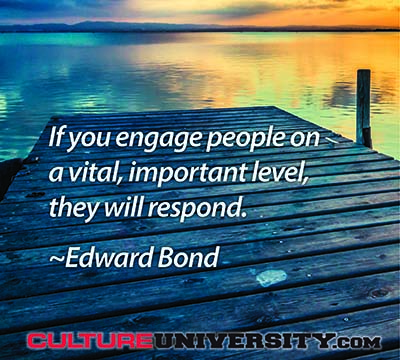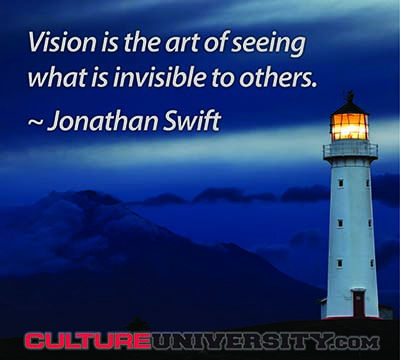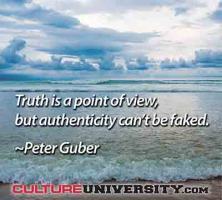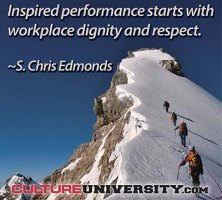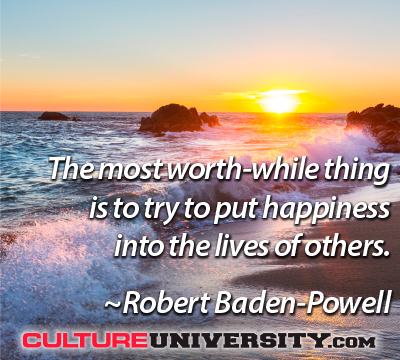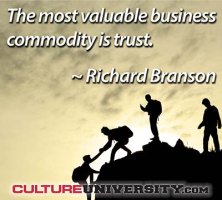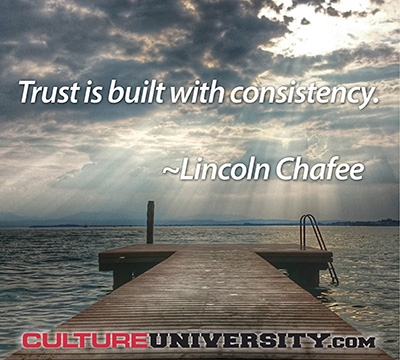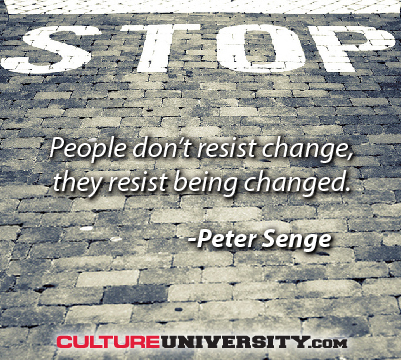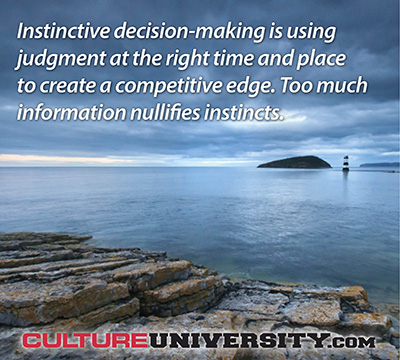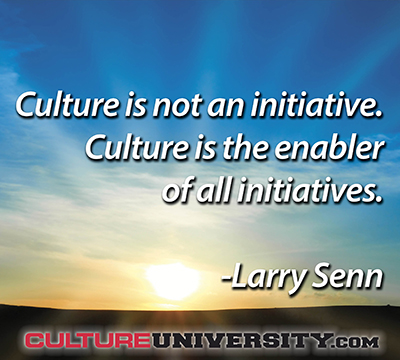“How can I motivate my employees to ________? (work harder, be safer, be healthier, participate, etc.)? is a futile question. Research has shown consistently that one person cannot force another person to change. However, cultivating a thriving workplace culture will foster intrinsic motivation, support employee wellbeing, help employees successfully adapt to change, and will also reveal the valuable connection between corporate culture and success. Instead of a host of gimmicks to entice employees, create the conditions in which they can find their own motivation – and then help them be the authors of their own change journey.1 Here’s how:

Positively impacting society on a global scale through culture awareness, education and action.
One of the biggest opportunities missed by companies everywhere is knowing how to tap into the power and potential hidden within the organization—the front line employees. What can companies do to create a culture of engagement that benefits the company, the customer and the employees? Focus on Super Vision versus supervision.
“I never give a 5”, said the senior executive when evaluating one of his people on a 5 point scale. “No one is perfect.” All our lives, in school, athletics, or socially, we are poked, prodded, and pushed to be perfect by evaluation systems that merely show us we are not 5’s, “not good enough”. We are less than perfect, based the standards of others, so peer pressure becomes our moral compass. In the business world, it’s organizational politics and fear that shape how we behave. We have to take orders, get along, and not rock the boat in order to advance.
How do leaders and team members treat each other in your workplace today? Do they interact respectfully and civilly . . . or aggressively and selfishly . . . or somewhere in between?
When I ask leaders this question, they typically respond with “Well, I think they treat each other OK.” They are not confident in their perceptions because they don’t pay enough attention to the quality of workplace interactions.
Have you ever felt like a donkey chasing a carrot that is always tantalizingly just beyond reach? Maybe it’s not a carrot you’re chasing, but if you’ve ever found yourself thinking, “I’ll be happy when…” then you’ll understand.
Culture is not about being cool or even being a “best place to work.” It’s about being more successful. Period. So while a lot of organizations may spend time trying to find the right balance of happy hours or break-room perks to try to bolster their culture and employee engagement scores, the companies that have the truly strong cultures—that run circles around their competition—actually take a different approach. They directly connect their culture to what drives their success.
What happens when a group of open-minded trust, ethics and compliance experts meet for lunch to discuss the intersection of the three disciplines and their respective roles in organizations?
One of the tasks at hand was to create a visual representation of the functional interaction between compliance, ethics and trust in an organization.
Without a thriving workplace culture, organizations may suffer from employee disengagement, stagnant business practices, uninspired products and services, and decreased financial performance. An important component of building a thriving culture – and improving the bottom line – is creating the conditions in which employee wellbeing can also thrive.
If you are reading this post we can assume you think culture is important. But investment in culture lags behind some of the other key contributors to performance: Brand, people, technology, process. So perhaps culture’s impact on performance is not universally believed. Executives have to focus first and foremost on those elements which will deliver the best return to their shareholders. There is a community of investment professionals who spend their lives considering company valuations and whose opinion holds considerable sway on share price.
At Officevibe, we make employee survey software for companies and the most common theme in the questions we get asked about how our product works is about trust. There is such a huge problem with trust inside most organizations.
When companies contact us, their intentions are usually good, they want to create an environment where they can collect feedback from employees to improve the company culture, but they go about it the wrong way. Companies often spend lots of time and energy on creating employee surveys, but there is usually very low participation. From the research I’ve seen, 30% is the average response rate for employee surveys.
There are plenty of articles that define culture, explain what a high performance culture looks like and gives angles on creating culture. The purpose of this article is to provide direction for anyone tasked with creating culture change. It is assumed that you understand what culture is, you have decided to make a change, and you want to know how to successfully implement a culture change.
Whenever we hear “knowledge is power,” we readily nod our heads. In organizations that thrive on a culture of learning, the theorem and its corollary are seemingly undeniable.
Because of what I do, I read countless articles on the topics of wellbeing, happiness, engagement, and other buzzwords, all of which have exploded in popularity in recent years. Most of these articles are highly repetitive, and I cringe when I see yet another on “The 5 Ways to _______” or another about the “Best Place to Work”. Many of these pieces are missing the point, and fail to actually identify the meaningful aspects of a positive workplace, i.e., people relationships.
We’ve had amazing weather in the US this spring. The middle of the country is inundated with too much rain while California suffers the worst drought in recorded history. Europe is experiencing warmer storms than normal while the eastern Mediterranean is dealing with snow.
An organization’s culture is more like the weather than you might think. It’s tangible and real. You can look out the window to gauge the weather. You’ll get a better idea of the weather if you go outside to feel how warm or cold or humid it is.
One of the greatest business challenges is effectively changing a workplace culture. What if it’s an extremely large, global corporation? Some might view it as an unsurmountable challenge. Not Larry Senn. He has arguably been a part of more large-scale culture transformations than any other individual in the world. He’s the founder and chairman of the culture-shaping firm Senn Delaney, a Heidrick & Struggles company.
I had the pleasure of interviewing him as part of his gracious support of CultureUniversity.com, where he provides regular insights on best practices in culture change as one of our esteemed faculty members (see the full video interview – link). The insights he shared, and his regular columns, should help us all more effectively manage culture change.
